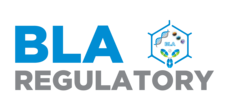The earliest project-based communication channel with the FDA.
Unlocking FDA INTERACT: Key Highlights and Updates
April 2, 2025
Executive Summary
The FDA INTERACT (INitial Targeted Engagement for Regulatory Advice on CBER/CDER ProducTs) meeting is an early, informal engagement mechanism that allows sponsors of innovative investigational products to obtain preliminary regulatory feedback. It is designed to address unique challenges in early product development – particularly for novel therapies with limited prior regulatory guidance – thus helping sponsors refine their development programs before advancing to formal pre-IND submissions (1).
Rationale for Requesting an INTERACT Meeting
Sponsors often request an INTERACT meeting to:
-
- Obtain Early Guidance: Secure informal, targeted advice on critical aspects such as Chemistry, Manufacturing, and Controls (CMC); preclinical proof-of-concept studies; and early clinical trial design. This early dialogue helps clarify regulatory expectations and identify data gaps.
- Mitigate Risks: By discussing potential issues early, sponsors can adjust development plans to prevent costly errors and streamline the path toward IND submission.
- Facilitate Strategic Decision-Making: The meeting provides a forum to discuss innovative strategies for addressing unprecedented scientific challenges, fostering a more efficient product development process (2).
Optimal Timing for Applying
The timing of the INTERACT meeting request is critical for its success:
- After Proof-of-Concept Data: The ideal time to request an INTERACT meeting is once initial in vitro and in vivo data demonstrate preliminary evidence of safety and efficacy. This ensures there is sufficient information for the FDA to provide meaningful feedback.
- Before Definitive Safety Studies: The meeting should be requested before the initiation of pivotal toxicology studies or definitive preclinical safety evaluations.
- When a Specific Investigational Product Is Defined: Sponsors should have identified the investigational product or product-derivation strategy to be evaluated in a clinical study. Requests submitted too early (with inadequate data) or too late (when the program is well advanced) are at a higher risk of being rejected (1; 2).
Key Considerations and Concerns
When preparing an INTERACT meeting request, sponsors should consider the following:
- Developmental Stage: Ensure the product is neither too preliminary nor too advanced. The FDA consistently rejects requests that do not align with the appropriate developmental stage.
- Quality of the Briefing Package: A concise yet comprehensive briefing document – often averaging 20–30 pages – is required. This document should clearly outline the product background, available data, development plans, and specific regulatory questions.
- Focused Questions: The meeting request should include a limited number of precise questions (typically no more than 10, including sub-questions) to avoid overwhelming the reviewers and to facilitate targeted responses.
- Regulatory Alignment: Familiarize yourself with current FDA guidance and SOPPs to ensure that your submission meets all regulatory requirements and expectations (2).
FDA Rejection Rate and Common Reasons for Denial
Recent regulatory analyses indicate that approximately two-thirds of INTERACT meeting requests are denied. The most frequent reasons for rejection include:
- Improper Timing: Requests submitted before sufficient proof-of-concept data is available or after the program has advanced beyond the optimal stage.
- Inadequate Briefing Package: Briefing documents that are either overly voluminous or lack sufficient detail to support the regulatory questions
- Unfocused Questions: Submission of broad or multi-topic questions that do not allow for specific, actionable feedback (1).
Preparation Strategies for an INTERACT Meeting
Preparation Strategies for an INTERACT Meeting To maximize the potential benefits of an INTERACT meeting, sponsors should:
Develop a Focused Briefing Package:
- Include a clear description of the investigational product, its intended clinical context, and a summary of proof-of-concept data.
- Provide a succinct background that outlines the development program and identifies critical challenges.
Define Specific, Grouped Questions:
- Organize questions by discipline (e.g., CMC, pharmacology/toxicology, clinical) and ensure that each question is supported by the available data.
- Limit the total number of questions to those that can feasibly be discussed within the allotted meeting time.
Ensure Timely Submission:
- Submit the briefing package concurrently with the meeting request at the appropriate developmental stage to align with FDA expectations.
Review Relevant Regulatory Guidance:
- Consult the latest FDA guidance documents and SOPPs related to formal meetings and INTERACT sessions to ensure compliance and clarity (2).
Typical Questions to Ask During an INTERACT Meeting
Sponsors may consider asking the following types of questions during an INTERACT meeting:
CMC-Related Questions
- “Does the FDA agree with our proposed manufacturing process and control strategy for early-stage production?”
- “Is our approach to product characterization and batch release testing adequate to support the initial clinical trial?”
Pharmacology/Toxicology-Related Questions
- “Based on our in vitro and in vivo proof-of-concept data, are the selected animal models appropriate for safety evaluation?”
- “Are the designs of our preliminary toxicology studies sufficient to identify potential risks before pivotal studies?”
Clinical Development-Related Questions
- “What key elements should be included in our first-in-human study design to ensure safety and efficacy?”
- “Does the FDA have recommendations on the dosing strategy and endpoint selection for early clinical trials?”
Conclusion
The FDA INTERACT meeting is a valuable early-stage tool that offers sponsors the opportunity to obtain targeted feedback on investigational products. By carefully timing the request, preparing a concise and focused briefing package, and asking the right questions, sponsors can navigate the stringent regulatory environment more effectively. However, given the high rejection rate for INTERACT meeting requests, timing and briefing adequacy – rigorous preparation and adherence to FDA guidance are essential for success.
To learn how to sufficiently prepare for an INTERACT meeting, BLA Regulatory is here to help. Our experienced team provides tailored solutions to ensure that your INTERACT meeting with the FDA goes smoothly.
For the latest updates on regulatory news and industry best practices, subscribe to our newsletter and follow us on [Social Media Platform].
Disclaimer: This newsletter is for informational purposes only and does not constitute legal or regulatory advice. Please consult the appropriate FDA guidance document for detailed recommendations
References:
- Parexel International Corporation. FDA INTERACT Meetings: What You Need to Know. © 2021 Parexel.
- NIH’s SEED. INTERACT Meetings with FDA. Published February 2024.

